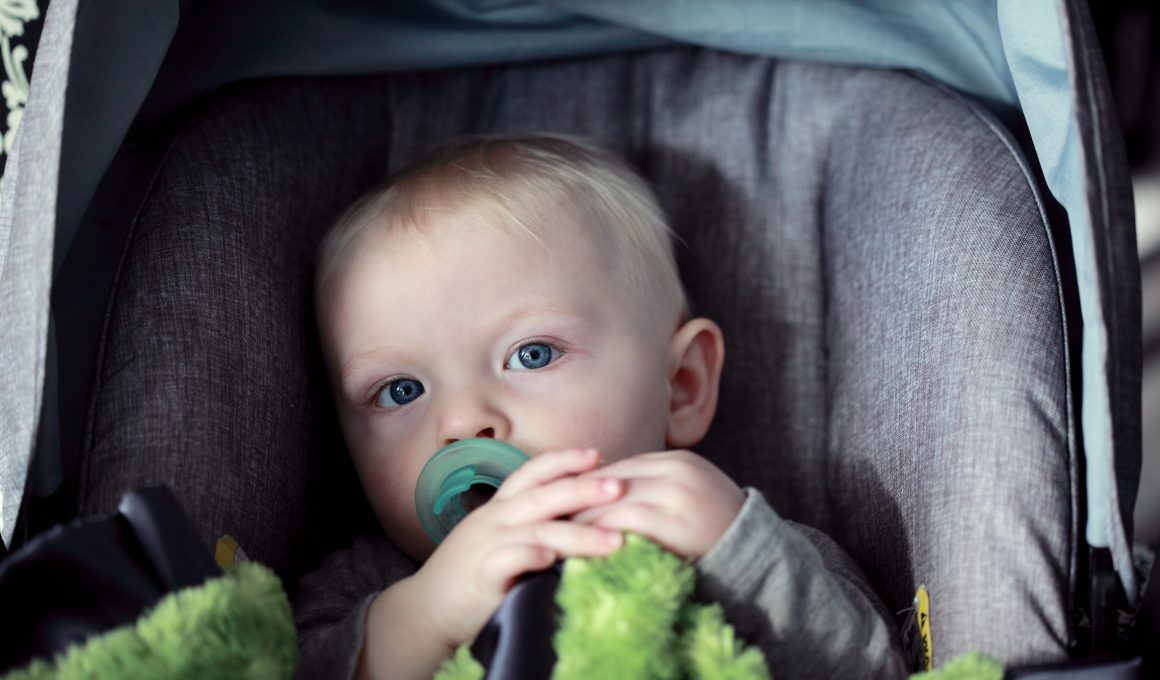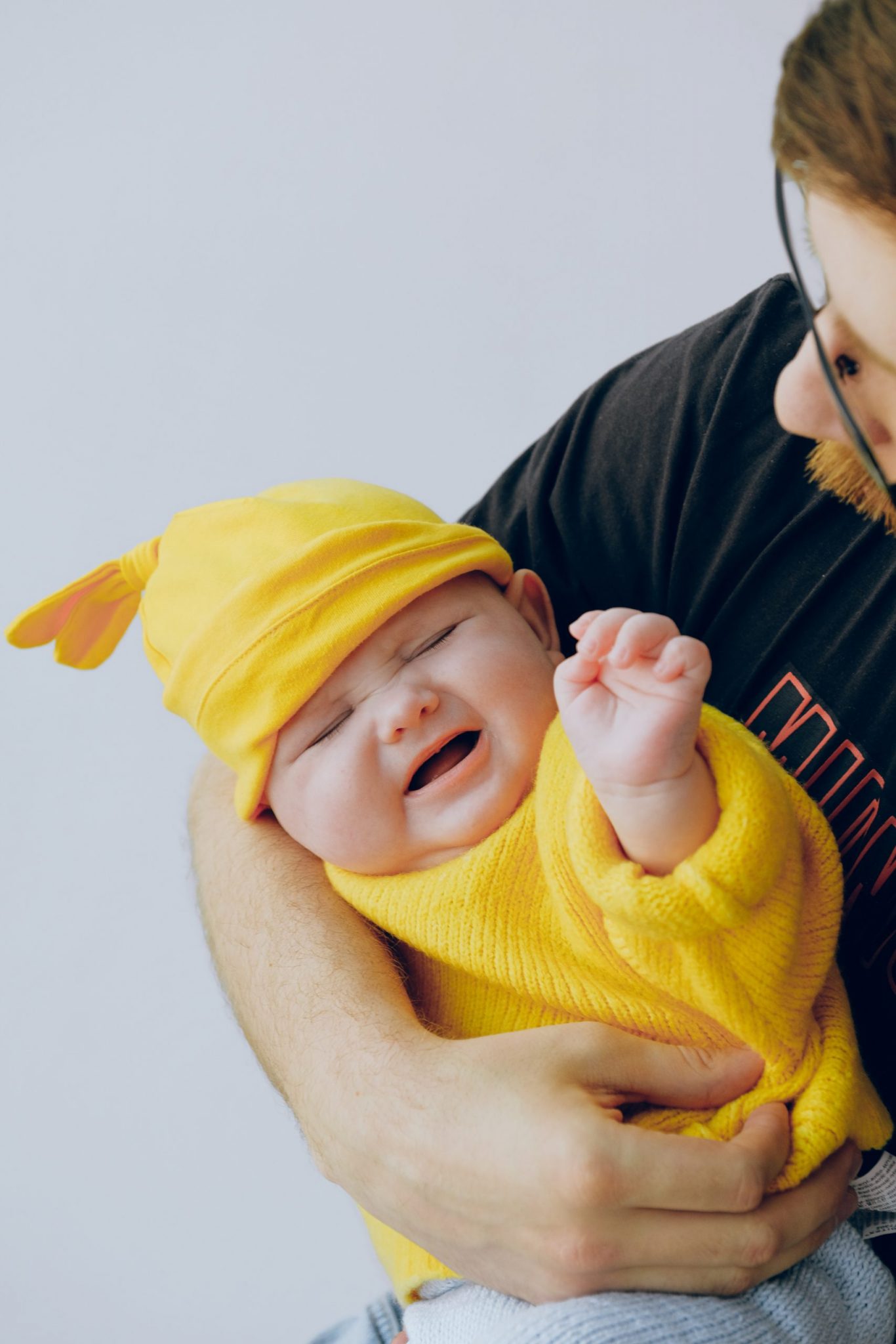Life with a baby has its joys and woes, challenges and beauties, struggles and wins. More often than not, the biggest struggles arise when it comes to your baby’s safety. A common headache parents face is car seat crying.
There are two types of babies in the world. Those who love traveling in the car seat and those who start crying as soon as they catch sight of the car seat.
If your baby is the type to bawl their eyes out when traveling in the car seat while you attempt to drive safely despite the distraction, you are not alone. This is a common problem many parents face starting from when their baby is an infant.
A car seat is a must-have for the security and safety of your baby. It helps to protect your infant in a possible accident, and the design of car seats protects your baby’s head and spinal cord in the event of a crash. But of course, your baby doesn’t understand these life-saving benefits..
Generally speaking,
- Babies dislike being physically restricted in the car seat and are used to more freedom of movement.
- They want your attention.
- T hey’re uncomfortable (ie, too hot, too cold, motion sick, straps are too tight, they’re hungry, they’re wet, they’ve pooped, they’re tired, the sun is in their eyes).
In this article, we will look at more reasons behind car seat crying and help you to navigate dealing with a fussy baby in the car seat. If you are a parent who is familiar with driving around with a crying infant and feeling helpless, keep reading to figure out how to handle the situation better.
My baby hates being in the car seat. Why?
There are a variety of reasons why your baby might hate the car seat.
Your baby is uncomfortable
Babies may cry when they feel uncomfortable in their car seats. If your baby shows a negative reaction to the car seat, there are a few things you can do to address the issue.
First, ensure that the car seat is properly installed. Refer to the manuals for both the car seat and your vehicle to follow the installation guidelines correctly.
Next, check the seating position of your baby. Tight straps can exert excessive pressure on your baby’s belly, so make sure they are adjusted appropriately. Additionally, consider the seating angle, as an uncomfortable position or a seat that causes a hunched posture can contribute to your baby’s discomfort. Finally, evaluate the padding of the car seat to ensure it provides adequate support.
By addressing these factors, you can help create a more comfortable and pleasant car seat experience for your baby.
Your baby is overstimulated
Excessive noise, movement, or visual stimuli that your baby experiences while strapped into the backseat of a moving car can be overwhelming for them, leading to feelings of distress and crying.
Your baby hates being alone
Your baby may be accustomed to being held for most of their waking hours, so transitioning to a car seat where they no longer feel the constant physical contact with your body can be unsettling for them.
Your baby is fussier by nature
Babies often become accustomed to being held for most of their waking hours. Therefore, when they are placed in a car seat where they no longer have constant physical contact with your body, it can be unsettling and upsetting for them.
Your b aby has motion sickness
Babies can become fussy due to motion sickness, although it is more commonly seen in toddlers. However, some babies may also experience motion sickness.
Your baby is premature or colicky
Premature babies and colicky babies often have heightened sensitivity to light, noise, and movement, which can contribute to their discomfort with car seats. Being alone in the back of the car seat exposes them to increased motion and noise, further stimulating their senses and potentially causing them to dislike the car seat.
Is it common for toddlers to protest against car seats?
According to experts, it is normal for toddlers to protest against using car seats, and many parents experience this behavior. This is especially common among toddlers who are developing new physical skills, such as walking, and may dislike the feeling of being restrained.
When dealing with car seat protests, it is important for parents to remain calm, cool, and connected. Children may resist the car seat because they don’t like feeling forced into it. Giving your child a sense of control can help. You can offer them the option of getting into the car seat themselves or having you place them in it.
It’s important to avoid using bribes, such as promising ice cream if they sit down. This only rewards their protest and teaches them that they can negotiate limits with you. Instead, you can give your child a choice about something they can bring in the car, such as a snack, a book, or a small toy. Creating a bag of special toys specifically for car rides can also be helpful in keeping them entertained and engaged.
When will my baby stop car seat crying and fussing?
It depends.
As babies grow older, they tend to outgrow the fussiness they feel in the car seat. The first three months of life are often the most challenging in terms of crying and fussiness.
However, it’s important to note that some children may never develop a liking for being strapped into a car seat. While we can be flexible with certain parenting aspects, safety and using car seats are non-negotiable.
In a calm and reassuring tone, let your child know that you understand their dislike for the car seat but emphasize that it is an important safety rule they must follow. Although they may not fully comprehend your words at their current age, they will gradually understand the significance over time.
Tips to calm your fussy baby in the car seat
Here are some strategies to help address your car seat challenges. We hope you find the best solution for both your baby and yourself.
Calm your baby down
Before securing your baby in the car seat, try placing them on their back on a play mat or in their crib. You can play some soothing music or sing a lullaby to help calm them. The goal is to relax your baby before placing them in the car seat, so feel free to try other soothing activities that work well for your baby.
Check your baby’s comfort level
Before embarking on your car ride, ensure that your baby has a fresh diaper and is dressed in comfortable clothing.
Next, take a moment to assess certain factors such as lighting and temperature. Is there excessive light shining in your baby’s eyes? Is the backseat too hot or cold? Are the straps of the car seat properly adjusted and positioned behind their shoulders?
- Temperature can be a concern for babies in car seats, but it’s not always about being too cold. Surprisingly, many babies struggle in the car because they are too warm.
- Avoid dressing your baby in a coat or jacket while in the car seat, as it can cause overheating and interfere with the proper functioning of the seat’s straps.
- Consider using a sunshade on the window if you suspect that sunlight in your baby’s face is causing discomfort. This simple measure can help mitigate the issue.
Make sure your baby is in good health
If your baby was fussy at home and continues to cry in the car seat, it’s possible that there could be an underlying health issue. It’s worth checking if your baby has any signs of discomfort such as an ear infection or fever. Monitor their behavior and if you suspect something is wrong, it’s advisable to consult a healthcare professional for further evaluation and guidance.
Help your baby familiarize with the car seat
Encourage your baby to spend some time sitting and playing in the car seat while it is still inside the house. This familiarizes them with the seat and can help them feel more comfortable and at ease.
By creating a positive association with the car seat, your baby may be more willing to sit in it during car rides. Gradually increasing their exposure to the car seat in a relaxed and playful environment can help alleviate any resistance or discomfort they may have initially felt.
Play entertaining or soothing music
Music often helps when you’re driving. Depending on the time of day and your child’s mood, music can sometimes help prevent crying in the car.
If it’s near nap time or bedtime, or if you’re leaving an event where your baby has been stimulated, instrumental and calm music can help soothe them to sleep.
Jazz or classical music without lyrics is also great to help babies settle.
Try toys and mirrors
Consider hanging a soft, covered mirror within your baby’s view in the car. This can serve as a source of entertainment and engagement for your little one. Babies often enjoy looking at their own reflections, which can be both entertaining and reassuring for them. If possible, position the mirror in a way that allows you to make eye contact with your baby, creating a connection between you and providing additional reassurance.
When choosing toys for the car, opt for soft toys instead of hard ones. Young children have a natural reflex to throw objects, and hard toys can cause harm if thrown. By attaching soft toys to your baby’s car seat, they can enjoy admiring and playing with the toys while ensuring their safety and comfort during the ride.
Stay in sight
If you believe that your baby is feeling unsettled because they can’t see you, make an effort to stay visible and provide reassurance. You can try touching your baby, talking to them, or even singing a song. These actions can help them feel connected to you and reduce their distress.
If you are a passenger in the car and not the one driving, consider sitting next to your baby in the backseat. Engage with them by talking, singing, or playing together. Your presence and interaction can provide the comfort they need to settle down and feel more at ease during the car ride.
Accept that it may just take time
If none of the previously mentioned tips seem to work for your baby, it’s important to remember that babies eventually outgrow the phase of crying in the car seat.
Stay optimistic and patient, as peaceful car rides may be just around the corner. As your baby grows and becomes more accustomed to car travel, they are likely to become more comfortable and content during the journeys.
Tips to keep moms calm
When you find yourself in a stressful situation where your baby is upset and resistant to being placed in the car seat, it’s important to remain calm and composed. Here are some tips to help you navigate this challenging situation:
- Take a moment to calm yourself: Before attempting to secure your baby in the car seat, take a few deep breaths and focus on exhaling your stress. Visualize inhaling a sense of calm and repeat a peaceful mantra to yourself, such as “peace begins with me.
- Stay calm and be firm: While your baby may protest and resist, it’s important for you to remain calm and firm in your approach. Avoid becoming angry or agitated, as this can further upset your baby. Use a gentle and reassuring tone as you explain to them that you need to secure them in their car seat to keep them safe. The more calmly you handle the situation, the more likely they are to cooperate.
- Pull over if needed: If you find yourself becoming overly stressed or overwhelmed, it’s okay to pull over in a safe spot. Step out of the car, take some deep breaths, and get some fresh air. Stretching and taking a moment for yourself can help you regain composure before attending to your baby’s needs.
- Be patient and remember that it’s temporary: Remind yourself that this phase will pass. Like every other stage in your baby’s development, their resistance to the car seat won’t last forever. Stay patient and focus on finding strategies that work for you and your baby during this challenging time.
By staying calm and patient, and maintaining a positive mindset, you can navigate the difficulties of getting your baby into the car seat with greater ease and peace of mind.
References: parents.com, childdevelopmentinfo.com, todaysparent.com, whattoexpect.com, attachmentparenting.co.uk










